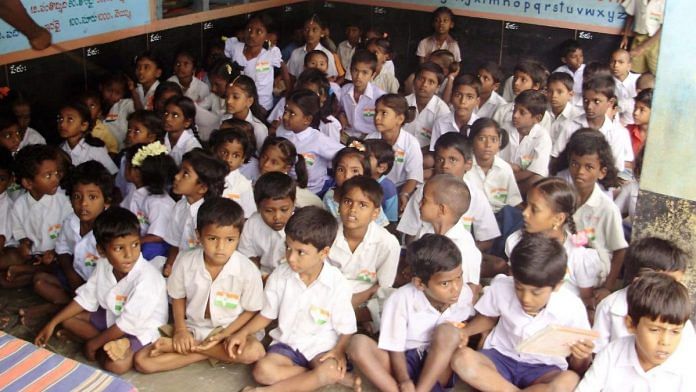Rural Development Ministry data shows access to highest level of school education remains a concern, only 6.57 per cent villages have up to senior secondary schools.
New Delhi: Over 14 per cent of villages in India don’t have schools, while as many as 10 states in the country have over 15 per cent such villages, shows the latest data available with the Rural Development Ministry.
Collected under Mission Antyodaya, the data also shows that around 47 per cent villages have schools only up to the primary level.
The comprehensive data, an assessment of village-level infrastructure facilities and amenities across states and Union Territories, is currently available for 5,27,507 villages and 2.3 lakh gram panchayats.
Apart from the 75,613 (14.33 per cent) villages that don’t have schools, data shows 21 per cent villages have up to middle level schools (Classes 6 to 8), around 11 per cent have up to high schools (Classes 9 and 10) and only 6.57 per cent have up to senior secondary schools (Classes 11 and 12).
The ministry’s aim behind collecting village-wise data is to identify gaps in villages based on the set parameters to ensure targeted development and execution of schemes.
Also read: Punjab begins pre-primary classes in all govt schools, anganwadi workers miffed
State-wise findings
Ten states — Uttar Pradesh, West Bengal, Jharkhand, Bihar, Manipur, Goa, Odisha, Uttarakhand, Arunachal Pradesh and Himachal Pradesh — are worse off than the national average, with over 15 per cent villages reporting no school at all.
Mizoram, Kerala and Gujarat, meanwhile, have less than 2 per cent villages with no schools.
Kerala also does exceedingly well with respect to higher education, with senior secondary schools available in as many as 80 per cent villages, and 11 per cent villages reporting at least up to high school level. This implies that the state has less than 10 per cent villages which have schools only up to middle or primary level.
The poorest performers at senior secondary level school education are Odisha, Nagaland and Jharkhand, with only 1.7 per cent, 1.8 per cent and 2.1 per cent villages, respectively, with such schools.
Reading the data
Ministry officials explain that the data is only for villages and not at the Gram Panchayat level — which usually has a cluster of villages under it. The ministry hasn’t yet collected Gram Panchayat-level data.
Effectively, this means that the 14 per cent villages that don’t have schools might have one in a neighbouring village. This also implies that access to school education may not be as difficult.
The National Sample Survey Office (NSSO)’s 2014 data said 94 per cent households in rural areas reported availability of primary school within 1 km from the house.
The NSSO data said it was the availability of higher levels of school that remained low in rural areas, a fact further corroborated by the current Rural Development Ministry data.
The government of India’s flagship Sarva Shiksha Abhiyan aims at the universalisation of elementary education “in a time bound manner”, as mandated by the Indian Constitution that calls for free and compulsory education to children in the 6-14 year age bracket.
Also read: 20 lakh seats reserved in private schools for poor children but only 20% get filled



